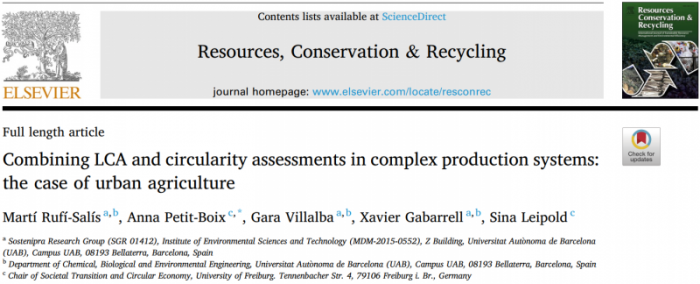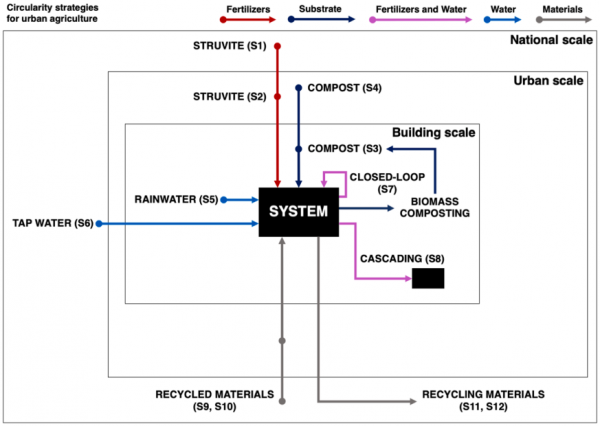Publication in Resources, Conservation & Recycling
7 January 2021

See full article: https://doi.org/10.1016/j.resconrec.2020.105359
Local food production through urban agriculture (UA) is promoted as a means to make cities more sustainable. However, UA does not come free of environmental impacts. In this sense, optimizing urban resources through circular economy principles offers the opportunity to close loops and improve production systems, but an assessment of these systems through a combination of circularity and environmental tools is missing from the literature. The goal of our study is to analyse the environmental and circularity performance of applying circular strategies in UA systems. We use Life Cycle Assessment (LCA) and the Material Circularity Indicator (MCI) to assess the baseline scenario of a Mediterranean rooftop greenhouse and the application of 13 circular strategies. The results show that the MCI score for all strategies was biased by overweighting of the water subsystem in the mass balance. Based on this finding, we propose a series of modifications to the circularity assessment, calculating specific MCI scores for every subsystem before coupling them with environmental life cycle indicators. The outcome is a set of indicators that use the Linear Flow Index (LFI), where decreasing the values as much as possible will correspond to a decrease both in environmental impact and linearity of the system (the inverse of circularity). The use of these indicators provides a simple understanding of the circular and environmental performance of these systems while being fully adaptable. With these indicators, the uses of nutrient recirculation, struvite fertilizer or recycled materials were the best strategies to improve urban agriculture.

Figure 1: Circular scenarios under assessment